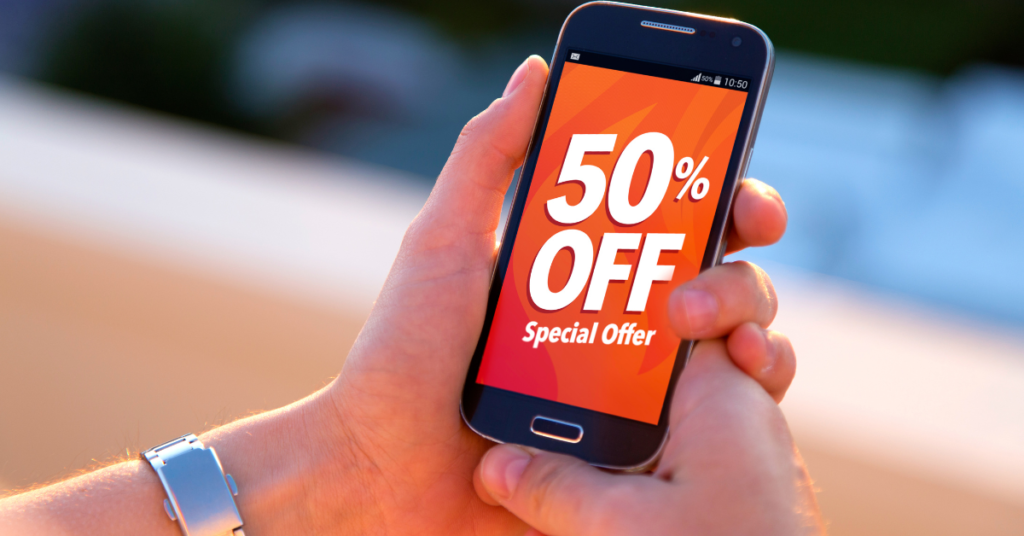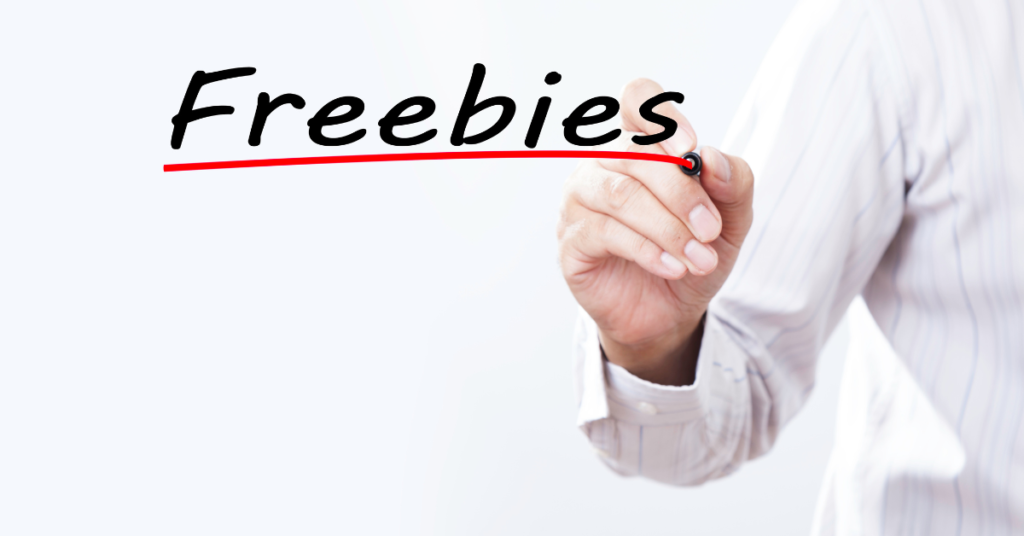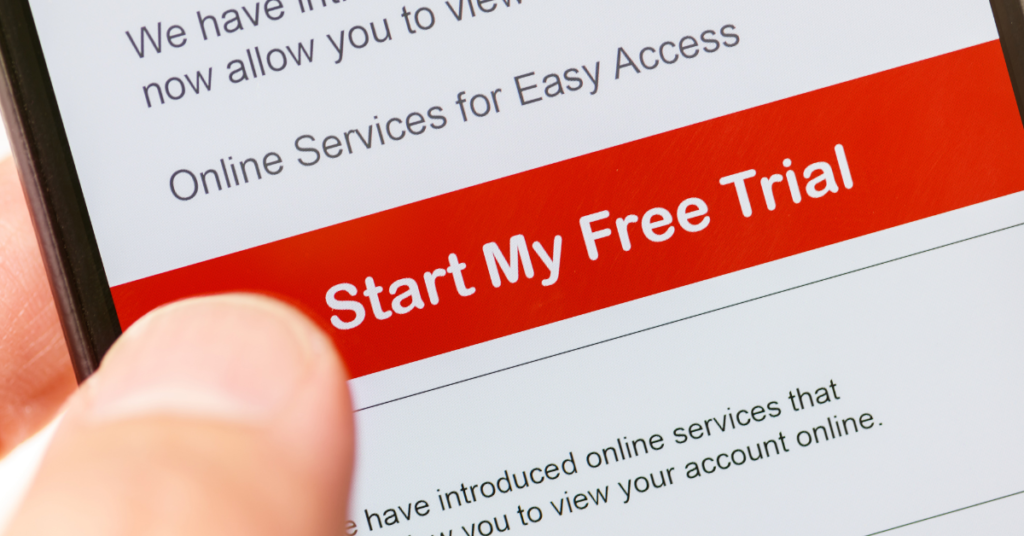Marketers are experts at persuasion, and they use a variety of tricks to get you to spend more money. While it’s impossible to be completely immune to most of the marketing tricks, there are things you can do to avoid being fooled.
When you’re strolling through a mall, minding your own business, when a catchy display at a store window catches your eye. You walk in, intending to browse and know more, but somehow, you find yourself leaving with more bags than you initially planned. You’ve just fallen victim to one of the most famous tricks in marketing – the art of persuasion.
In this blog post, we’ll take a look at some of the most famous marketing tricks, and we’ll show you how to avoid them. We’ll also provide some tips for making smarter shopping decisions.
The Illusion of Discounts

Marketers love to dangle the prospect of discounts in front of our eyes. “50% off!” or “Buy one, get one free!” signs can be incredibly enticing, but they may not always be what they seem.
The Trick: One common tactic is to use decoy pricing. This is when marketers offer multiple price points for a product, with one option priced slightly higher than the others. This makes the middle option seem like the best value, even though it may not be.
Another tactic is to use limited-time offers. This creates a sense of urgency and makes us feel like we need to act now or miss out. However, in many cases, these offers are extended or repeated, so there’s no need to rush.
Example: Imagine you see a sign proclaiming “Buy 2, Get 1 Free” on your favorite shampoo brand. It’s hard to resist such an offer, right?
Strategy: Before you succumb to the allure of discounts, do some quick mental math. Ask yourself the following questions:
- Do I really need the extra items?
- Will I use them all before they expire?
- Is it actually cheaper to buy the bundle than to buy individual items?
In many cases, the answer to all of these questions will be no. Buying one item at full price may still be cheaper than getting two extra items you won’t use.
Limited-Time Offers

Marketers love to use limited-time offers to create a sense of urgency and pressure us into buying things we don’t need. The sale ticking clock makes us feel like we need to act now or miss out, but in many cases, these offers are extended or repeated, so there’s no need to rush.
The Trick: One common tactic is to use scarcity. Marketers will tell you that there’s only a limited supply of a product available, or that the sale is only for a short period of time. This creates a sense of urgency and makes us feel like we need to buy the product right away, even if we’re not sure if we need it.
Another tactic is to use social proof. Marketers will tell us that other people are buying the product quickly, or that they’re running out of stock. This creates a sense of FOMO (fear of missing out) and makes us feel like we need to buy the product too, even if we’re not sure why.
Example: You receive an email claiming that a product you’ve been eyeing is on sale for the next 24 hours only. The email says that the product is selling fast and that there’s only a limited supply left.
Strategy: Don’t fall for the pressure! Take a step back and ask yourself if you really need the product. If it’s something you genuinely need, it will still be available when you’ve had time to think it over.
Here are some additional tips for avoiding the trap of limited-time offers:
- Be skeptical of any offer that seems too good to be true.
- Do your research before you buy anything, even if it’s on sale.
- Compare prices from different retailers.
- Be aware of your own spending habits and triggers.
- Don’t make impulse purchases.
Remember, the clock is always ticking, but you don’t have to rush into any decisions. Take the time to think carefully about whether you really need something before you buy it.
Emotional Marketing

Marketers also are experts at manipulating our emotions. They know how to tug at our heartstrings and make us feel a deep connection with a brand or product. This type of marketing, known as emotional marketing, can be very effective, but it’s important to be aware of it so that you don’t make impulse purchases.
The Trick: Emotional marketing works by evoking strong emotions in us, such as happiness, sadness, nostalgia, or fear. Marketers do this by using images, music, and stories that resonate with our emotions. They also use persuasive language to trigger our emotions and make us feel like we need their product to be happy or complete.
Example: A touching commercial about a family reuniting during the holidays, sponsored by a well-known tech company. The commercial shows the family members using the company’s products to connect with each other and create lasting memories.
more examples of the marketing campaigns:
- Coca-Cola’s “Share a Coke” Campaign: Coca-Cola’s campaign featured personalized bottles with people’s names on them. The message was clear: Coca-Cola is all about sharing moments of happiness with loved ones, and the campaign capitalized on the emotional appeal of personalization and connection.
- Dove’s “Real Beauty” Campaign: Dove’s campaign challenged conventional beauty standards and celebrated the diversity and natural beauty of women. It aimed to boost women’s self-esteem and encourage them to feel good about themselves, creating a strong emotional bond with the brand.
- Nike’s “Dream Crazy” Campaign: Nike’s campaign featuring Colin Kaepernick took a stand on social issues and ignited strong emotions around the topic of racial justice and athlete activism. It resonated with consumers who shared these values and beliefs.
Strategy: It’s important to be aware of your emotions when making purchase decisions. If a product’s emotional appeal is clouding your judgment, take a step back and ask yourself if it genuinely meets your needs. Don’t let marketers manipulate you into buying something you don’t need just because it makes you feel good.
Here are some additional tips for avoiding the emotional marketing trap:
- Be skeptical of any ad that seems to be playing on your emotions.
- Ask yourself if you would still be interested in the product if the ad didn’t evoke such strong emotions.
- Do your research before you buy anything, even if it’s an emotional purchase.
- Compare prices from different retailers.
- Be aware of your own spending habits and triggers.
- Don’t make impulse purchases.
Remember, it’s okay to feel emotions when making purchase decisions, but don’t let them control you. Take the time to think carefully about whether you really need something before you buy it.
The Ikea marketing methods

The Swedish furniture giant, Ikea is renowned not only for its functional and affordable furniture but also for its unique marketing and retail strategies that often lead customers to buy more than they initially planned. Let’s delve into some of the methods employed by IKEA that encourage customers to purchase items they may not have intended to buy.
- Maze-Like Store Layout: IKEA’s stores are intentionally designed in a maze-like layout, guiding customers through various showrooms and product displays. This encourages exploration and often results in shoppers discovering and adding products they hadn’t initially planned to buy.
- Inspirational Showrooms: IKEA’s stores feature beautifully designed room displays that showcase their products in real-life settings. These displays inspire customers with ideas for their own homes, leading to additional unplanned purchases.
- Flat-Pack Furniture: IKEA’s flat-pack furniture concept reduces transportation costs and requires customers to assemble products at home. This hands-on experience increases attachment to the item and can create a sense of accomplishment, making customers more likely to appreciate and justify their purchase.
- Family-Friendly Experience: IKEA aims to be family-friendly by offering play areas for children. This convenience allows parents to shop more leisurely, increasing the chances of discovering additional products they hadn’t initially considered.
- Limited-Time Offers and Discounts: IKEA frequently promotes time-limited discounts and special offers, encouraging customers to make quick purchase decisions due to perceived savings, even for items they hadn’t planned to buy initially.
- In-Store Cafeteria: Many IKEA stores have cafeterias or restaurants strategically placed within them. This provides customers with a break during their shopping trip. While dining, they may discuss potential purchases and even return to the showroom, potentially adding more items to their cart.
IKEA’s marketing methods are carefully designed to create an immersive shopping experience that encourages customers to explore the store, discover new products, and make impulse purchases. Although you may think their products are convenient and easy choice you should consider the cost you pay to it and not to fall into impulse buying to things you don’t really need!
The Power of Freebies

The word “free” is like a siren song to many shoppers. We are drawn to free samples, gifts with purchase, and free trials. But marketers know this, and they use it to their advantage.
The Trick: Companies offer freebies for a reason, they want to get you in the door, get you interested in their products, and make you more likely to spend money. Freebies can also create a sense of urgency, making you feel like you need to act now before the offer disappears.
Example: A cosmetics store offers a free makeup bag with a purchase of $50 or more. The makeup bag is worth $20, so it seems like a great deal. But if you don’t really need $50 worth of cosmetics, then you’re spending more money than you intended just to get the free bag.
Strategy: Don’t fall for the “free” trap without considering the overall cost. Calculate whether the value of the free item justifies the spending required to obtain it. Also, ask yourself if you really need the free item in the first place.
The Subscription Trap

Subscription services are a convenient way to access content or products, but they can also be a slippery slope to mindless spending. Before you know it, you’re signed up for multiple streaming services, food delivery apps, and other subscriptions, each with a monthly fee. These fees can add up quickly, especially if you’re not careful.
The Trick: Marketers know that subscription services are a great way to generate recurring revenue. That’s why they make it easy to sign up for subscriptions and difficult to cancel them. They may also offer free trials or discounted rates to entice you to sign up.
Example: You sign up for a free trial of a new streaming service to watch a popular show. After the trial ends, you forget to cancel the subscription, and you’re charged a monthly fee. This same scenario can play out with other types of subscriptions as well.
Strategy: To avoid the subscription trap, it’s important to be mindful of your spending and to regularly review your subscriptions. Cancel any subscriptions that you no longer use or need. You can also consolidate similar services to save money. For example, instead of subscribing to three different streaming services, you could subscribe to a bundle that includes all three services for a discounted price.
Here are some additional tips for avoiding the subscription trap:
- Be careful about signing up for free trials. Make a note of the end date and cancel the free trial subscription before you’re charged.
- Read the fine print before you sign up for any subscription. Make sure you understand the terms and conditions, including the cancellation policy.
- Use a subscription management tool to track your subscriptions. This can help you to identify and cancel unused subscriptions.
- Set a budget for your subscriptions and stick to it.
By following these tips, you can avoid the subscription trap and save money.
Also have a look at this article for more tips : 6 Tips for Avoiding Marketing Traps
The Wisdom of Mindful Spending
As you navigate the maze of marketing tricks, it’s crucial to remember that not all marketing is inherently evil. Marketers are skilled at their craft, but it’s up to us, as consumers, to be informed and discerning. Here’s a recap of the wisdom we’ve uncovered:
- Discounts may not always save you money; consider your actual needs.
- Don’t succumb to the pressure of limited-time offers; take your time.
- Be aware of emotional marketing and its influence on your decisions.
- Evaluate the true cost of “free” offers.
- Keep subscriptions in check; only pay for what you genuinely use.
- Practice mindful spending and prioritize needs over wants.
Also read: MINDFUL SPENDING: THE KEY TO FINANCIAL FREEDOM
Conclusion
In today’s world, consumers are bombarded with marketing messages from all sides. Marketers use a variety of techniques to persuade us to buy their products and services, many of which are designed to trick us into spending more money than we need to.
However, by being aware of the most common marketing tricks and using some simple strategies, we can avoid falling victim to them. For example, we should be skeptical of marketing claims that seem too good to be true, do our research before buying anything, compare prices from different retailers, and be aware of our own spending habits and triggers.
Remember, it’s our money, and we’re in control of how we spend it. By being mindful of marketing tricks and making smart choices, we can save money and get the products and services we need and want.
So, next time you’re bombarded with marketing messages, take a step back and ask yourself if you really need the product or service being advertised. If the answer is no, then resist the urge to buy it, even if it’s on sale or comes with a free gift. Your wallet will thank you for it.

